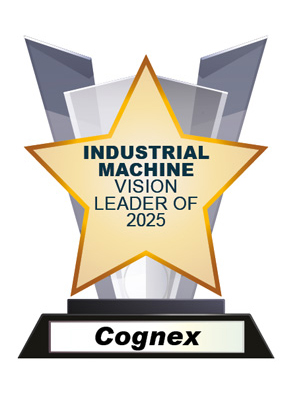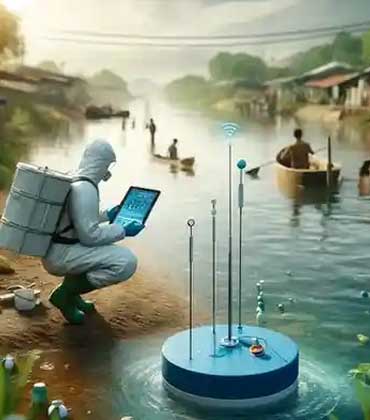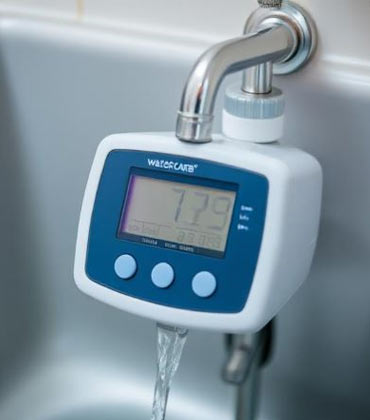THANK YOU FOR SUBSCRIBING
Applied Technology Review: Specials Magazine
Cognex Corporation (NASDAQ: CGNX), the global leader in machine vision systems, sensors, software and industrial barcode readers, is redefining manufacturing automation. The firm helps businesses meet rising consumer expectations for high-quality, cost-effective products by improving product quality, reducing production errors and optimizing operational efficiency. Established in 1981 in Natick, Massachusetts, Cognex Corporation has become synonymous with high-performance machine vision solutions that simplify automation for industry leaders. Its cutting-edge products fuel innovation and streamline operations across diverse sectors such as automotive, logistics, electronics, and medical devices. The foundation of Cognex Corporation lies in a groundbreaking vision to integrate human-like visual capabilities into industrial processes. This aspiration was spearheaded by Dr. Robert J. Shillman, an MIT lecturer specializing in human visual perception, and his graduate students, Marilyn Matz and Bill Silver. Together, they pooled their expertise in cognition and an initial $100,000 investment from Dr. Shillman to create Cognex—an abbreviation of “Cognition Experts.” The company’s debut product, DataMan, transformed manufacturing with its advanced optical character recognition (OCR) technology. This innovation enabled manufacturers to elevate quality control and reduce industrial waste with unparalleled precision, setting the stage for Cognex Corporation’s enduring legacy of industrial innovation. Over the years, the company has consistently adapted to the shifting demands of the industrial landscape. This commitment is evident in innovations like the In-Sight vision system, which combines advanced cameras with sophisticated software. The system enables real-time inspection and analysis, addressing the growing need for precision and efficiency in industrial operations. In addition, Cognex Corporation’s DataMan series offers stateof- the-art barcode readers that enhance logistics and supply chain operations traceability. As e-commerce grows, the firm’s vision systems are crucial in optimizing fulfillment centers. Cognex Corporation also serves an international customer base from offices in America, Europe and Asia, supported by a global network of integration and distribution partners. This extensive reach allows the company to deliver its advanced solutions to industries worldwide, ensuring that its innovations have a tangible impact on global manufacturing efficiency. In 2020, Cognex Corporation launched the In-Sight D900, a smart camera incorporating deep learning capabilities for defect detection and assembly verification. This breakthrough exemplifies the firm’s relentless pursuit of technological excellence, helping industries maintain a competitive edge in an increasingly automated world.
Water Care Monitor Of The Year - 2025
A sparkling pool or hot tub is a source of relaxation, but maintaining water quality can often feel like a guessing game. Test strips provide inconsistent results, chemical levels fluctuate unexpectedly, and water can quickly turn cloudy or unsafe without frequent monitoring. Homeowners want to enjoy their pools, not spend time troubleshooting water chemistry. Crystal Water Monitor eliminates the guesswork with smart, real-time monitoring and precise recommendations based on over 1000 readings per week. The system includes a water-immersed sensor and an external monitor, protecting sensitive electronics. At the helm of Crystal Water Monitor is Justin Miller, its co-founder and CEO whose journey into water monitoring began in 2014 leading to the launch of pHin in 2017. pHin quickly became the top product in its category, offering pool owners a convenient way to test water quality. However, it was discontinued after being acquired in 2018 due to strategic changes during COVID-19. Recognizing the need for a more robust and precise solution, Miller leveraged years of experience in Silicon Valley, including roles at Apple, eBay, and Comcast, to develop Crystal Water Monitor—a superior product designed to eliminate the issues faced by pHin and other competitors. Unlike pHin’s floating sensor design, which was prone to water seepage and eventual damage to electronic components, the Crystal Water Monitor is built for greater durability and accuracy. This strategic improvement allows the device to provide continuous, real-time readings without the risk of internal damage. “We didn’t just build another product—we built a smarter, more intuitive solution that truly solves the real challenges homeowners face in maintaining their water,” said Miller. Advanced Technology for Smarter Water Care Crystal Water Monitor is more than just a sensor—it’s an intelligent system designed to simplify pool care. Using its mobile app, users can also input additional water chemistry data, including hardness, alkalinity, and cyanuric acid levels. The app also allows users to scan chemical barcodes for precise dosing recommendations, ensuring the right amount of chemicals is added to maintain balanced water conditions. Unlike competing devices that test water chemistry just once daily, Crystal Water Monitor conducts over 1,000 weekly tests. This high-frequency monitoring enables users to track daily chlorine levels, pH balance, and overall water quality fluctuations, preventing common problems before they escalate. The system uses oxidation-reduction potential (ORP), the standard measurement for most commercial pools, to measure sanitizer effectiveness, ensuring a cleaner and safer swimming environment. This feature is great for both pools as well as hot tubs, where rapid chemical shifts occur due to small water volumes and high temperatures. It detects these changes and delivers immediate recommendations, ensuring the water remains safe.
CXO INSIGHTS

Championing Strategic Leadership in Water and Forest Sustainability
Elvy Barton, Water and Forest Sustainability Senior Manager, Salt River Project

A Legacy of Excellence in Water Quality and Environmental Stewardship
Rachel Bretz, Regional Director of Water Quality and Environmental Compliance, American Water

Bringing Innovation Through Risk-Taking
John Willis, Vice President, Brown and Caldwell

Modernizing Internal Auditing
Stephen Harrison, Director of Internal Audit, California Water Service (NYSE: CWT)

Resolution Copper: Water Management and Reclamation
Ryan Ewing, Operations and Maintenance Manager, Rio Tinto (ASX: RIO)

Pacing Along the Energy Evolution
Julian Kaufmann, Executive Vice President, Cams (NSE: CAMS)

The Evolution and Integration of Renewable Energy
Jim Helvig, P.E., Vice President of Operations, Dashiell Corporation
IN FOCUS
Revolutionizing Water Management With IOT powered Monitoring Vertical: Water Care Monitor
Water care monitoring utilizes IoT for real-time water management, optimizing efficiency, reducing waste, preventing leaks, and improving decision-making with data insights.
EDITORIAL
Diving into the Depths of Applied Technologies
From Gen AI to augmented reality, significant breakthroughs in applied technology are transforming how businesses work with and experience technology around them. Innovations are paving the way for more immersive, intuitive and tailored interactions, allowing organizations to be more productive and creative when serving their client needs. The industrial automation landscape is transforming, driven by advancements in machine vision technology. A significant augmenter is the integration of deep learning algorithms and AI, which allow machine vision systems to learn from data, recognize patterns and make decisions accurately. Innovations like 3D imaging and sensing technologies are also becoming a major trend, allowing shape recognition, precise measurements and spatial analysis of objects. Comprehensive water monitoring solutions are also gaining significant traction as governments worldwide are enforcing strict regulations and standards to protect water resources and public health. Leveraging technologies like data analytics, IoT sensors and AI can help monitor water quality, forecast demand patterns, detect leaks and enable proactive interventions. Advancements in machine learning and data analytics are improving water resource management’s speed and accuracy with systems that predict water demand, detect anomalies and make decisions based on real-time data. For example, remote sensing-based approaches can systematically monitor soil moisture to optimize irrigation scheduling, while AI-powered models can predict groundwater recharge or forecast events. Membrane filtration systems, advanced oxidation processes and biological treatment processes are causing transformative impacts, effectively removing contaminants and producing high-quality wastewater for non-potable purposes. The development of innovative materials is opening new avenues for water management. Self-cleaning coating for water infrastructure reduces biofilm formation and prevents corrosion. Graphene-based materials guarantee efficient water desalination and energy recovery from wastewater. In this edition of Applied Technology Review, we explore the recent developments in water monitoring systems and industrial machine learning solutions and how companies harness cutting-edge technologies to stay abreast of challenges for establishing a strong presence among the public. We hope this edition of Applied Technology Review helps you find the right partner for your business requirements.




![Cognex Corporation [NASDAQ: CGNX]: Redefining Machine Vision across Industries Cognex Corporation [NASDAQ: CGNX]: Redefining Machine Vision across Industries](https://www.appliedtechnologyreviewapac.com/newstransfer/upload/2-dbkbf-.jpg)






